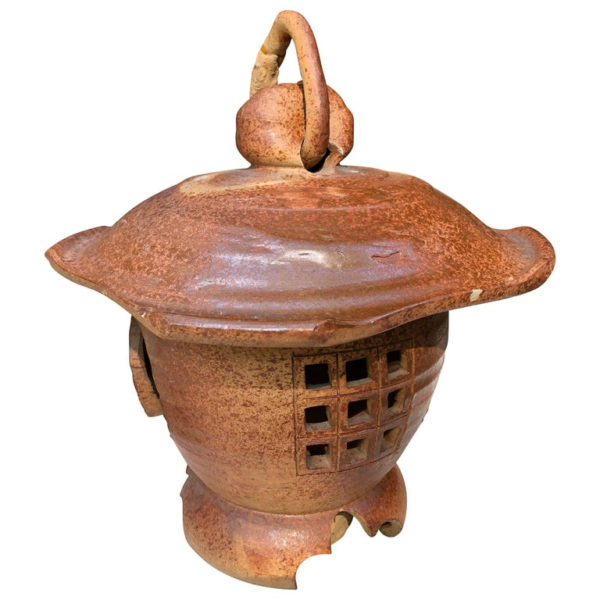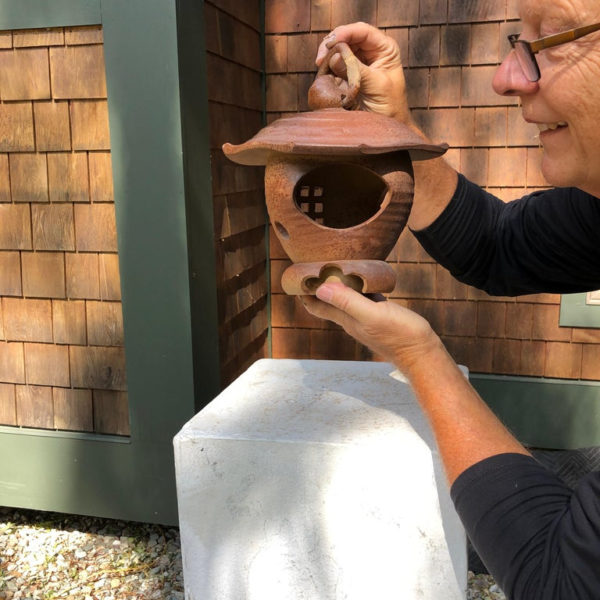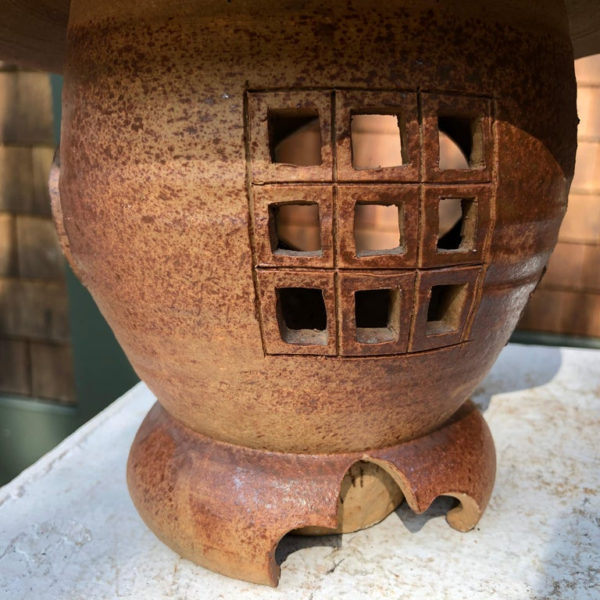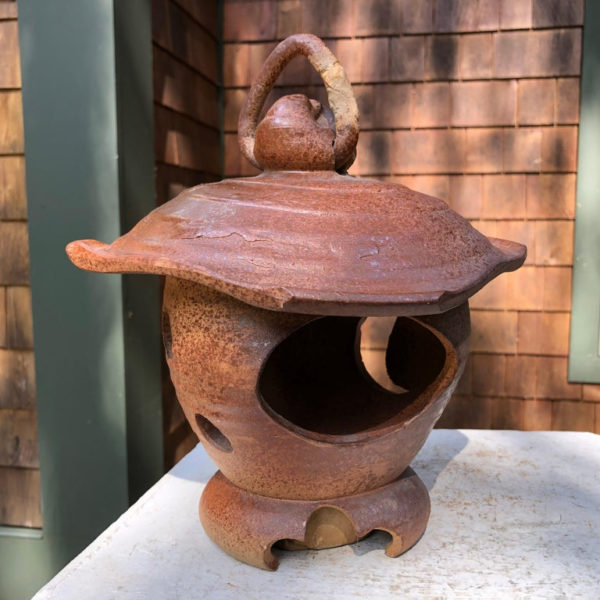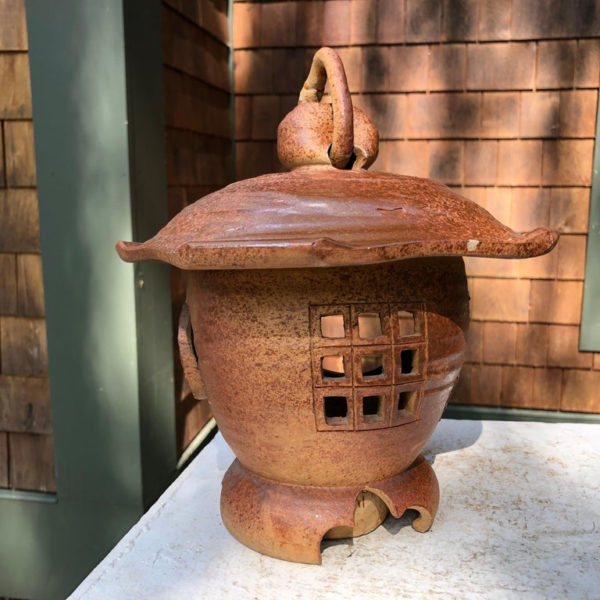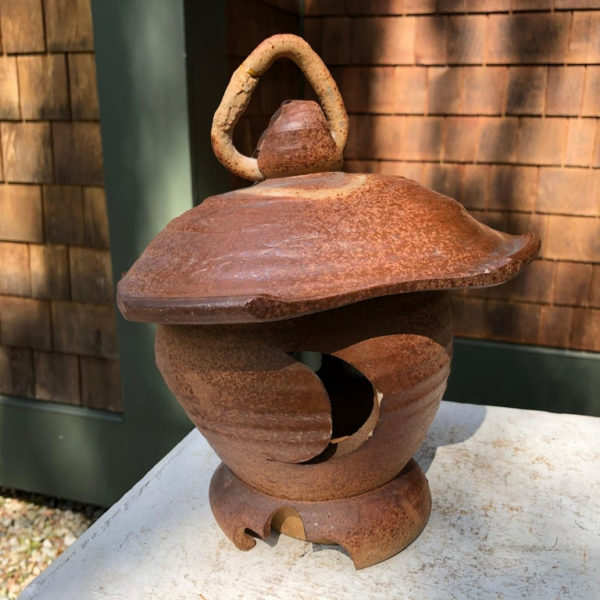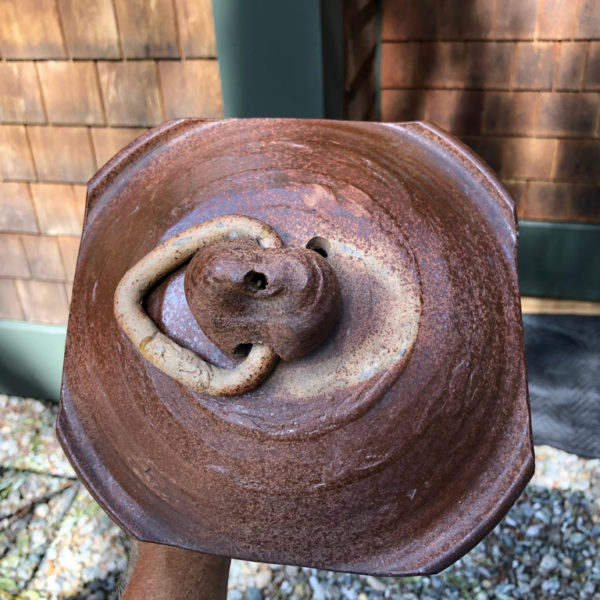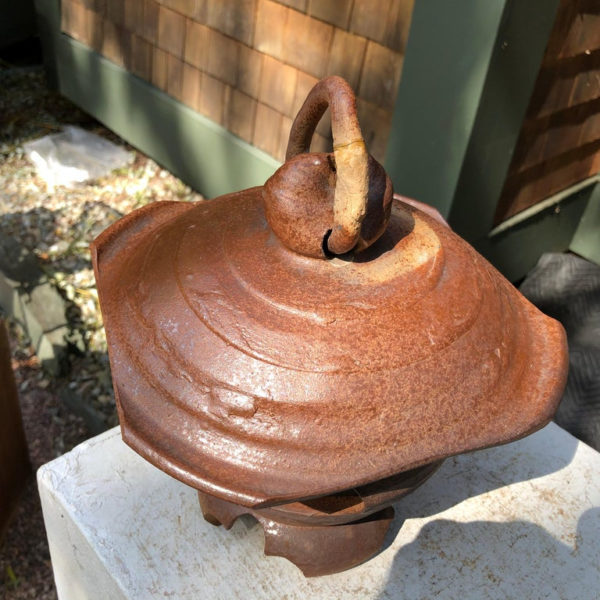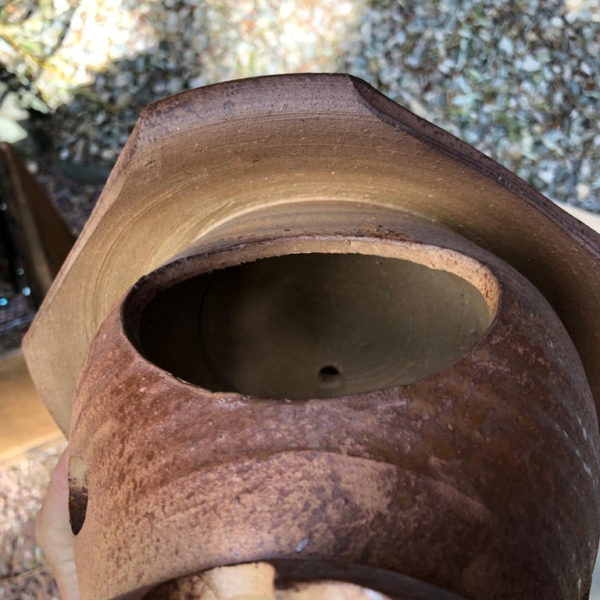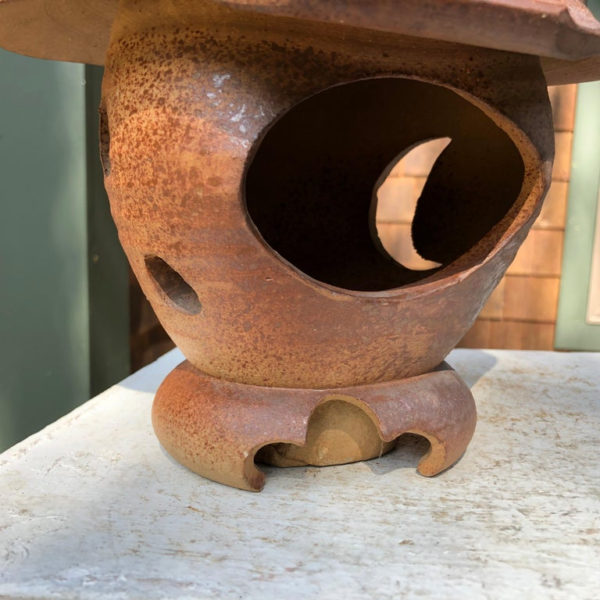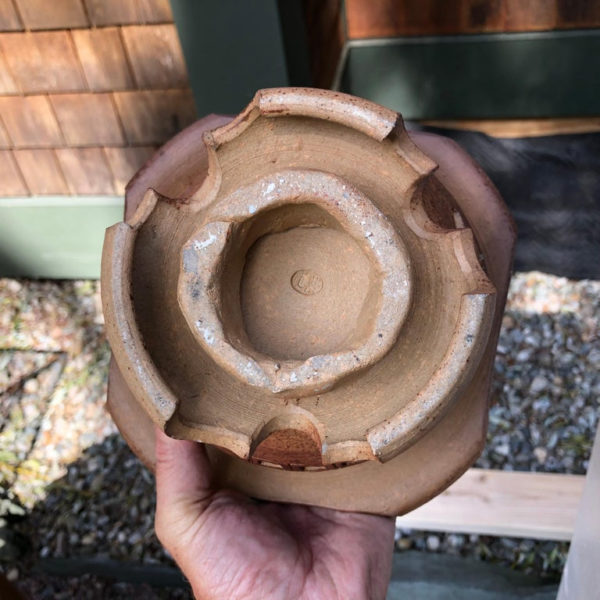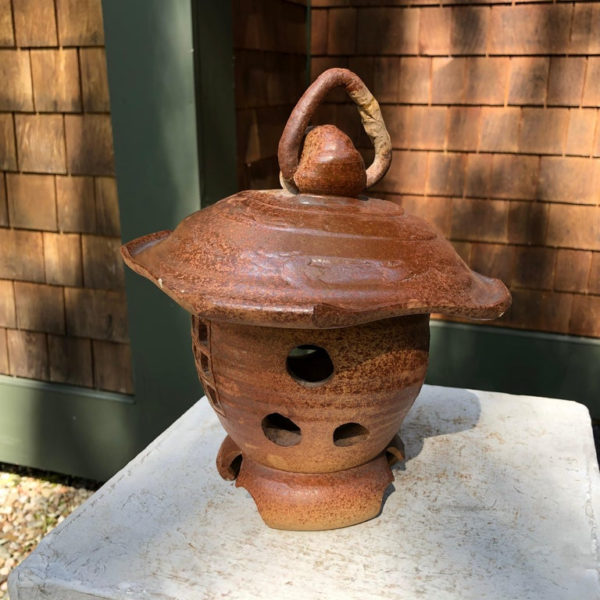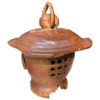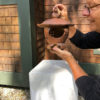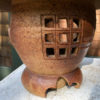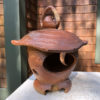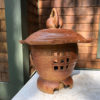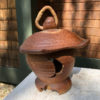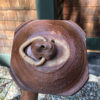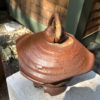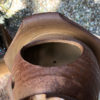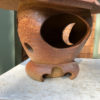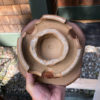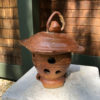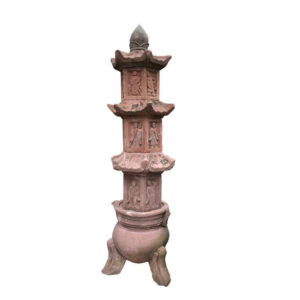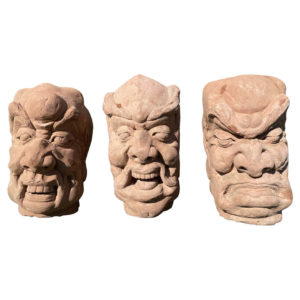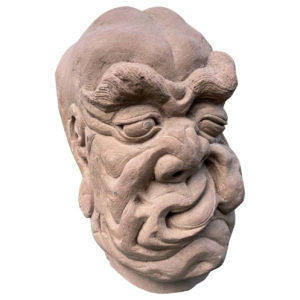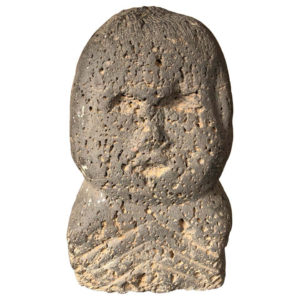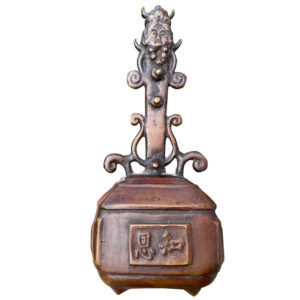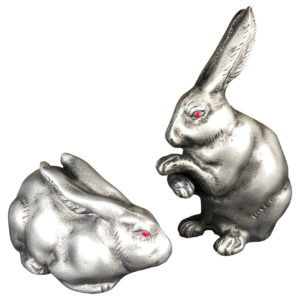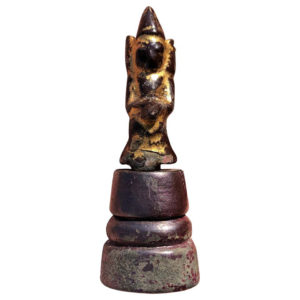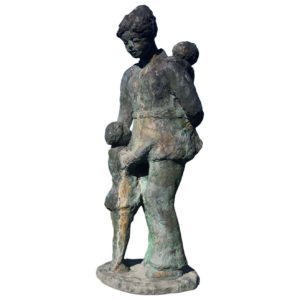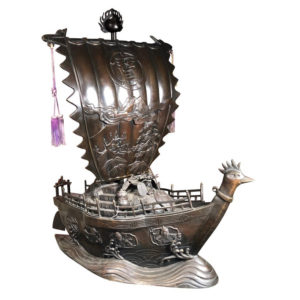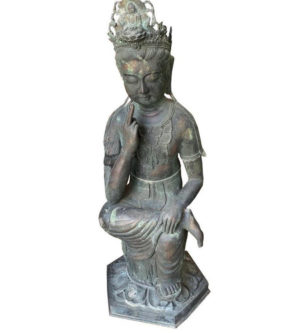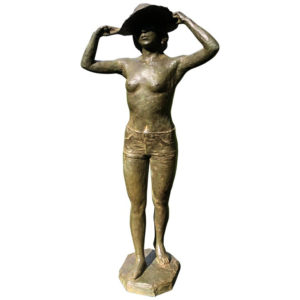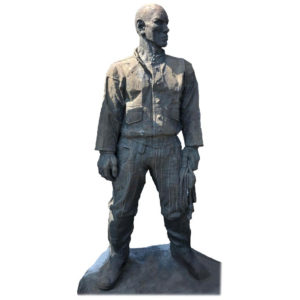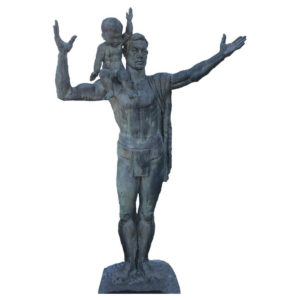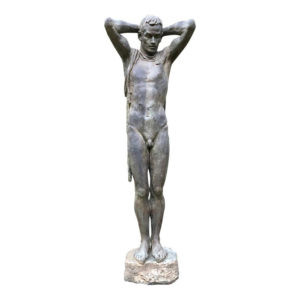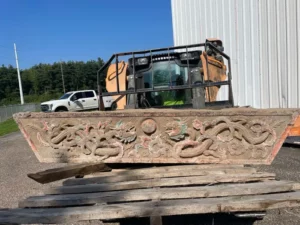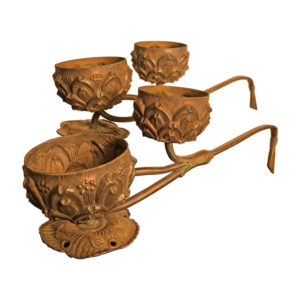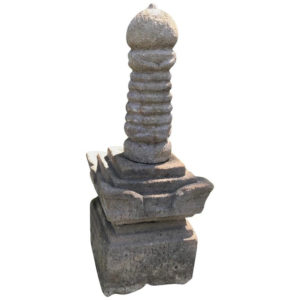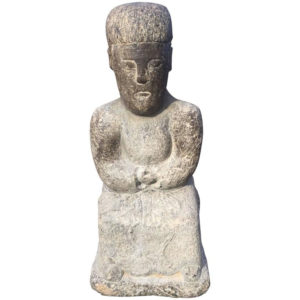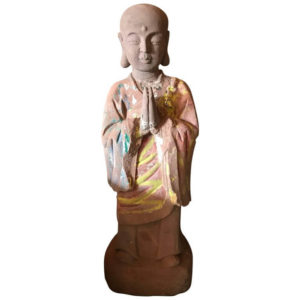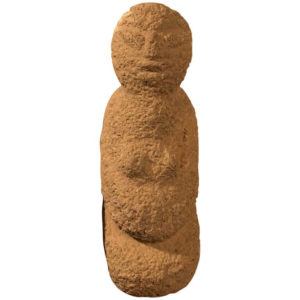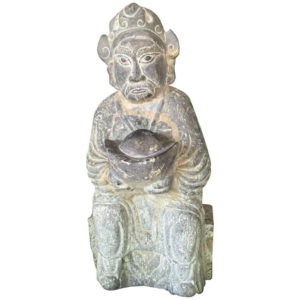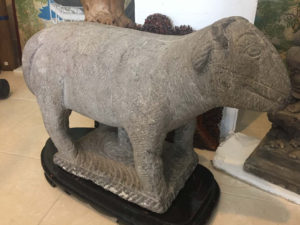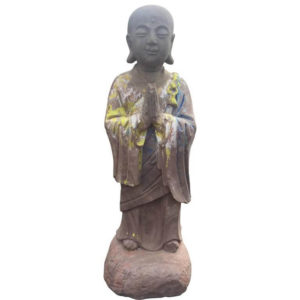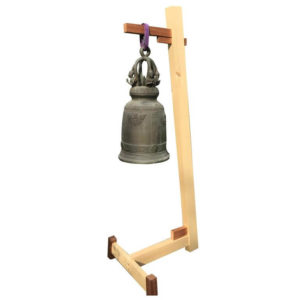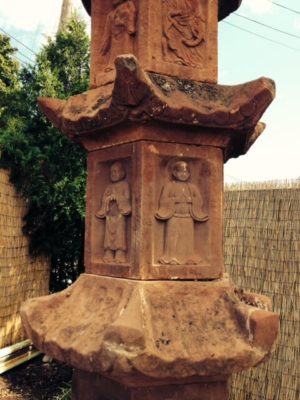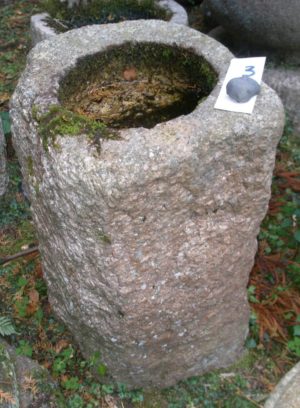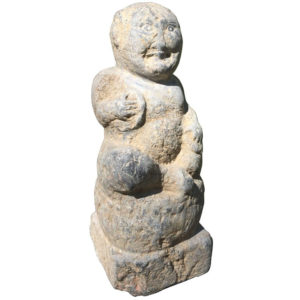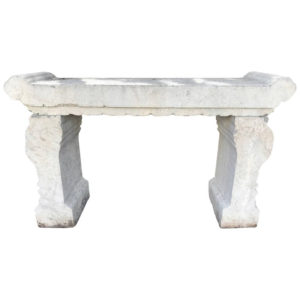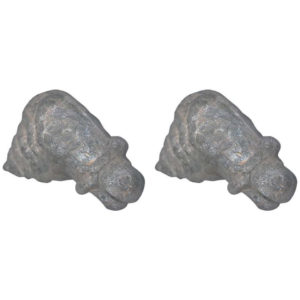Japanese Antique Hanging Stoneware Lantern One-of-a-Kind Takayama Find
$225.00
Sold Out
Lifetime GuaranteeEmail to a friend
From our recent Japanese New Acquisitions Travels
First we have seen.
This is a quite old and seldom seen oval form hand formed hanging stoneware lantern crafted in -Shino-yaki- style and kiln. It may be suspended in your favorite indoor or outdoor space.
Heavily hand formed, this is the first example of this large oval form style we have seen in over 15 years of dealing with fine Japanese garden ornaments.
It was crafted some 110 years ago at the Shino Yaki Kiln, Gifu Province.
Handsome glazing.
Dimensions: 11 inches tall with hanger and 9 inches diameter- a hefty example capable of withstanding harsh outdoor conditions.
Period: Taisho period (1912-1926).
Quality: handcrafted pottery
Good garden candidate- this is an ideal accent size for a small outdoor or indoor Zen garden.
Only one.
Provenance: Old Japanese Takayama collection.
About Shino ware
Shino-yaki is Japanese pottery, usually stoneware, originally from Mino Province, in present-day Gifu Prefecture, Japan. It emerged in the 16th century, but the use of shino glaze is now widespread, both in Japan and abroad. It is identified by thick white glazes and red firing marks.
Lifetime Guarantee of Authenticity. All our Asian works of art are accompanied by our lifetime guarantee of authenticity.
History of Japanese lanterns:
In Japan a to¯ro¯ (lantern) is a traditional lantern made of stone, wood, or metal. Like many other elements of Japanese traditional architecture, it originated in China. In Japan, to¯ro¯ were originally used only in Buddhist temples, where they lined and illuminated paths and lighted lanterns were then considered an offering. In its complete, original form the lantern represents five elements of Buddhist cosmology: Bottom touching the ground, represents chi, the earth, the next section represents sui, or water, ka or fire, is represented by the section encasing the lantern’s light or flame, while fu¯ (air) and ku¯ (void or spirit) are represented by the last two sections, top-most and pointing towards the sky. These last two sections express the idea that after death our physical bodies will go back to their original, elemental form.
Yukimi-do¯ro¯ (?????) or legged lanterns have as a base not a post but curved legs and a wide umbrella with a finial. Relatively low, they are used exclusively in gardens and the traditional placement is near water. The umbrella can be round or have from three to eight sides, while the fire box is usually hexagonal. “Yu” loosley translated means water reflection. It was probably developed during the Momoyama period, but the oldest extant examples, found at the Katsura Villa in Kyoto, go back only to the early Edo period (17th century).
We have been dealing in authentic Japanese, Chinese, European, and Asian Fine art, antiquities, garden ornaments, lanterns and water basins for 25 years. Our president personally travels to Japan, Europe and China each year to meet his network partners who assist him in finding best examples. He personally inspects each antique work of art to ensure its old age, authenticity and quality condition. After accumulating a group, they are imported to Vermont in large containers. This method keeps shipping costs low and enables us to offer them to you at reasonable prices. We ship internationally.
Item Details
- Dimensions: N/A
Related Art
(802) 279-7601
(802) 279-7601
(802) 279-7601
(802) 279-7601
(802) 279-7601
(802) 279-7601
(802) 279-7601
(802) 279-7601
(802) 279-7601
(802) 279-7601
(802) 279-7601
(802) 279-7601
(802) 279-7601
(802) 279-7601
(802) 279-7601
(802) 279-7601
(802) 279-7601
(802) 279-7601
(802) 279-7601
(802) 279-7601
(802) 279-7601
(802) 279-7601
(802) 279-7601
(802) 279-7601
(802) 279-7601
(802) 279-7601

